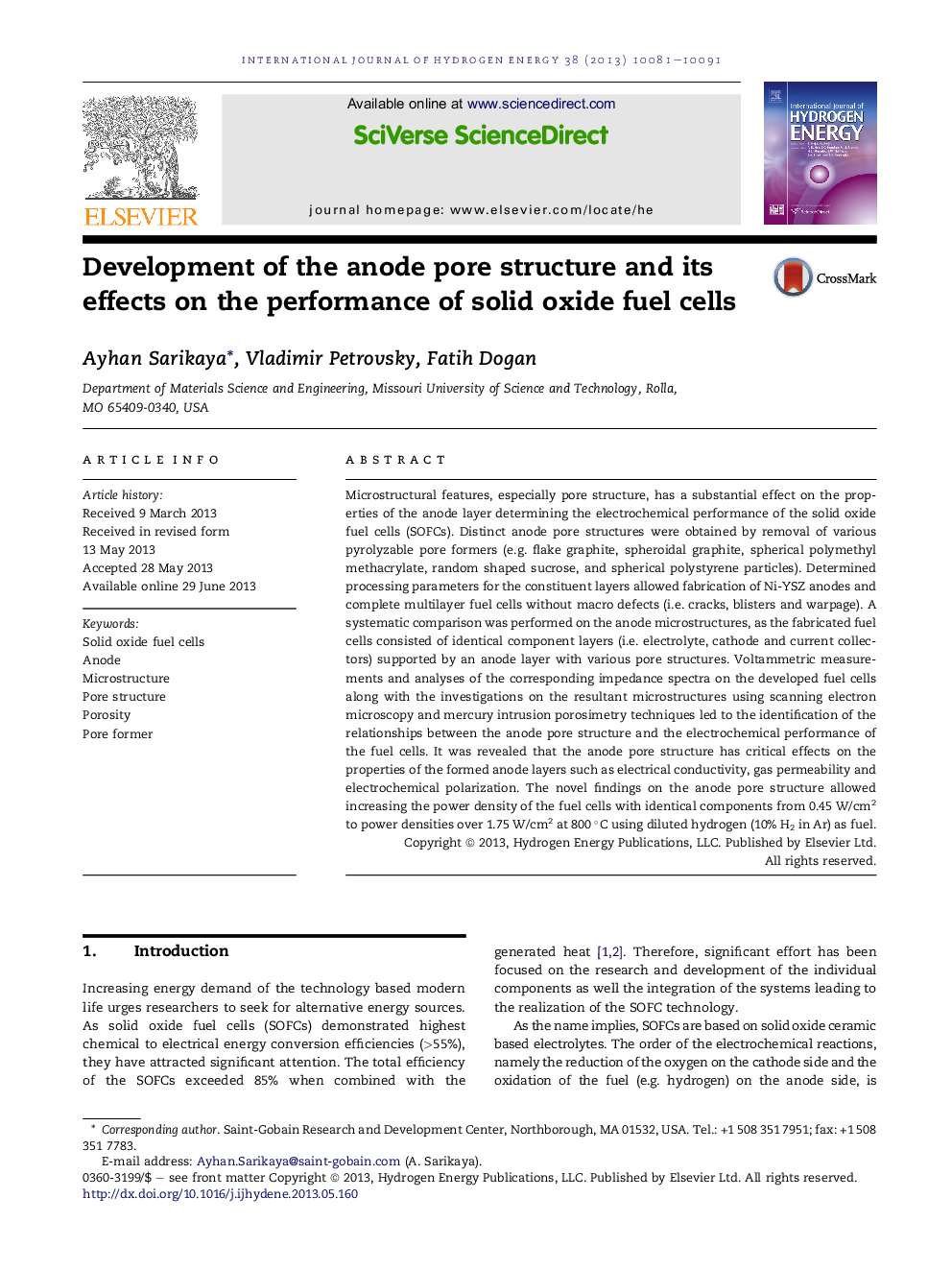| کد مقاله | کد نشریه | سال انتشار | مقاله انگلیسی | نسخه تمام متن |
|---|---|---|---|---|
| 1273421 | 1497521 | 2013 | 11 صفحه PDF | دانلود رایگان |

• Determination of anode microstructure–polarization resistance relationships.
• Substantial effect of the pore structure on the electrochemical performance.
• Power density improvement from 0.45 W/cm2 to 1.76 W/cm2 at 800 °C.
Microstructural features, especially pore structure, has a substantial effect on the properties of the anode layer determining the electrochemical performance of the solid oxide fuel cells (SOFCs). Distinct anode pore structures were obtained by removal of various pyrolyzable pore formers (e.g. flake graphite, spheroidal graphite, spherical polymethyl methacrylate, random shaped sucrose, and spherical polystyrene particles). Determined processing parameters for the constituent layers allowed fabrication of Ni-YSZ anodes and complete multilayer fuel cells without macro defects (i.e. cracks, blisters and warpage). A systematic comparison was performed on the anode microstructures, as the fabricated fuel cells consisted of identical component layers (i.e. electrolyte, cathode and current collectors) supported by an anode layer with various pore structures. Voltammetric measurements and analyses of the corresponding impedance spectra on the developed fuel cells along with the investigations on the resultant microstructures using scanning electron microscopy and mercury intrusion porosimetry techniques led to the identification of the relationships between the anode pore structure and the electrochemical performance of the fuel cells. It was revealed that the anode pore structure has critical effects on the properties of the formed anode layers such as electrical conductivity, gas permeability and electrochemical polarization. The novel findings on the anode pore structure allowed increasing the power density of the fuel cells with identical components from 0.45 W/cm2 to power densities over 1.75 W/cm2 at 800 °C using diluted hydrogen (10% H2 in Ar) as fuel.
Journal: International Journal of Hydrogen Energy - Volume 38, Issue 24, 12 August 2013, Pages 10081–10091